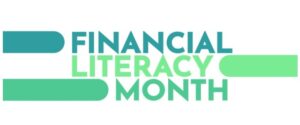There is a common belief that because young people have always struggled with money (a rite of passage of sorts), what is happening now is nothing new. Is it though? Is it really the same? Looking deeper, there is reason to believe that today’s financial hardship reality is different, not just for Millennials and Gen Z, but for all Canadians. Housing costs are at record highs, wages aren’t keeping up with inflation, and consumer debt is rising faster than ever before.
Saying things like “just get a job” or “housing has always been expensive” ignores what’s really going on, which is why it’s more important than ever to understand the full picture.
What’s different in today’s economy?

Although things have improved slightly, housing is still much less affordable in Canada than it used to be. According to a National Bank report from May 2025, the average mortgage payment in Toronto was over 45% of income, and in Vancouver, over 65%. How times have changed! Now, those numbers are closer to 77% and 92%. For some perspective, to buy a typical home in Vancouver today, you’d need to earn about $292,990 a year.
Those numbers are scary for even those who are relatively established financially; it’s especially tough for young people with lower incomes. A survey from Everyrate found that in 18 out of 20 of Canada’s largest cities, first-time homebuyers are facing mortgage payments that are way too high for what they can afford. Keep in mind that’s just for starter homes.
Home prices are so high that more young Canadians are being forced to stay in the rental market. This pushes rent prices even higher. In 2024, the CMHC reported that rents increased by 8% — the biggest jump ever. As of the 2021 Census, 63% of Canadians aged 15 to 29 were renters. That’s almost double the national average of 33%.
Housing isn’t the only problem. Canadians are also struggling with higher prices on everything from cars to groceries. The University of Calgary reported in October 2024 that grocery prices were 10.4% higher than a year before, over twice the rate of inflation.
Furthermore, trade wars are making food even more expensive. In May, Loblaw’s CEO, Per Bank, said that tariffs could raise prices on up to 6,000 products within two months.
How it’s affecting Canadians
While young Canadians are impacted most, rising costs are affecting everyone. Online will service company, Willfil, recently surveyed Canadians to find out how rising costs were affecting people’s financial decisions. It found that 71% believe their financial risk has gone up, 39% have stopped saving for the future, and 32% are slowing their debt repayment. Parents with young children are being hit the hardest.
The situation is so bad that many couples are putting off starting families. Statistics Canada reported that in 2022, “38% of young adults (aged 20-29) didn’t believe they could afford to have a child within three years.” Meanwhile, “32% did not believe they would find housing suitable enough to start a family.
Unsurprisingly, money troubles also take a toll on mental health. Back in 2016, nearly 80% of Canadians aged 15 to 34 said they “always or often hopeful about the future.” By 2021/2022, that number had dropped to 63%. For households facing financial struggles, hopefulness dropped even more, from 69% to 47%.
A need for understanding
Many financial hardship problems, like rising home prices, slow wage growth and inflation, are out of one person’s control. You can make smart financial choices, such as cutting back on spending or budgeting carefully, and still struggle to keep up.
That’s why we need to stop blaming people and start looking for real solutions. These are not just personal finance problems, but bigger issues that need action from governments, employers and other leaders. We need more affordable housing, better child care and wages that keep up with the cost of living.
More people are putting off major life decisions. Instead of judging them, we need more compassion, understanding, and real help.
Navigating financial hardship: Tips for Canadians
Even though many of these problems are outside your control, there are still things you can do to improve your financial stability. Here are a few good places you can start.
Track your spending
If you’re experiencing financial stress, start by tracking your spending. You can’t manage your money if you don’t know where it’s going. Look at the last two or three months of your credit card and bank account statements. See what you’re spending money on. You might be surprised how much small things, such as coffee, takeout, or streaming services, add up over a month.
Pause subscriptions or memberships
If money is tight, consider cancelling or pausing any subscriptions you aren’t using or don’t truly need right now. This can include streaming services, fitness apps, meal kits, premium news sites, cloud storage and more. We often sign up for these on a whim and forget that we’re being billed each month. Even small charges can add up quickly, $10 here or $20 there. That’s money you could put towards groceries, bills or an emergency fund.
Create a budget
Once you know where your money is going, create a budget that fits your income and spending needs. You can use a budgeting app, build a budget spreadsheet or do it the old-fashioned way — pencil and paper. Remember that a budget is just a plan for your money.
Build up your emergency fund
Consider setting aside small amounts of money into an emergency fund. If you lose your job or your hours are cut, these funds can cover your expenses while you search for another job or other sources of income. An emergency fund can also help you avoid using credit to cover an unexpected expense. According to The Financial Post, an EQ Bank survey found that 70% of Gen Z Canadians had boosted or thought about boosting their emergency savings in the early part of 2025.
Consider debt relief options
If you’re struggling to manage high-interest debt, such as multiple credit card balances, from debt management programs to debt consolidation loans, there are many options to help. Which one is best for you depends on your situation. Many of them allow you to combine your high-interest debt into a single, lower monthly payment, leaving your budget with a little more wiggle room.
Access free local resources
Free financial resources are available in most Canadian cities. This can include food, financial aid or advice. Don’t be afraid to ask for help. That’s why these programs exist.
Summary
Canada’s high cost of living is hurting people, especially young adults. Many are delaying financial goals or putting off major life plans due to high prices and low wages. While some of these problems are beyond our control, there are steps you can take to stay on track. Of course, we also need significant.






